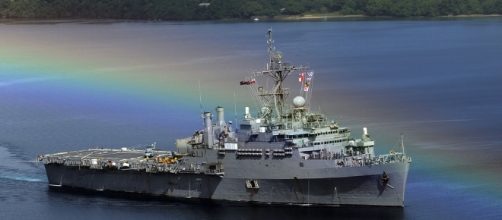The powerful U.S. Navy has a presence in all the oceans of the world. This position was occupied by the Royal Navy before World War I for nearly 200 years. The end of the first world war saw the U.S. Navy displace the Royal Navy as the most potent force in the world. The American Navy now has a global presence and its warships operate from the Atlantic to the Pacific and even in the Arctic region. But a new phenomenon has emerged, peace time accidents and collisions with terrible loss of life. Operations of aircraft have also led to accidents and all these add up to a sorry state of affairs
17 sailors killed
According to CNN, two collisions hundreds of miles apart have led to 17 sailors being killed.
A collision with a cargo ship in the Sea of Japan has been followed by another US Navy destroyer colliding with an oil tanker in the Strait Of Malacca. If one adds the loss of an Osprey chopper of the coast of Australia, this points to a serious problem. No navy can sustain so many casualties during peace time operations and this calls for a review of all aspects of training and operational alertness of the crew of the warships.
Pentagon worried
The U.S. High Command and the Pentagon are worried about these accidents and after an inquiry, it appears there has been a professionaĺ lapse in both the collisions. The inquiry into the collision of the USS Fitzgerald with the cargo ship is out and it blames the captain and many of the officers and crew.
The Navy has acted fast and disciplinary action has been taken. The captain was removed from command and another dozen seamen will face charges.
The collisions
The second collision of the destroyer USS McCain with a tanker in the Strait of Malacca again points to a lack of professionalism on the part of the captain and crew of the destroyer.
To lose 17 able-bodied young men is terrible and cannot be condoned and points to a serious gap in training and navy discipline, so important for a warship on the high seas. Collisions can only happen if the crew is not alert and following laid down SOPs. The fact that the crashes took place in clear weather conditions when visibility was good is cause for alarm.
The future
The US Navy needs to re-examine the motivation, training procedures and competence of officers commanding important warships. The attitude of the sailors needs to be evaluated and the Navy must decide whether fatigue is a cause of these crashes. The Navy must also examine if it is deployed too thinly and the sailors have sufficient time to unwind. The sea is an unforgiving place for a sailor who is unprofessional and prone to taking shortcuts.


